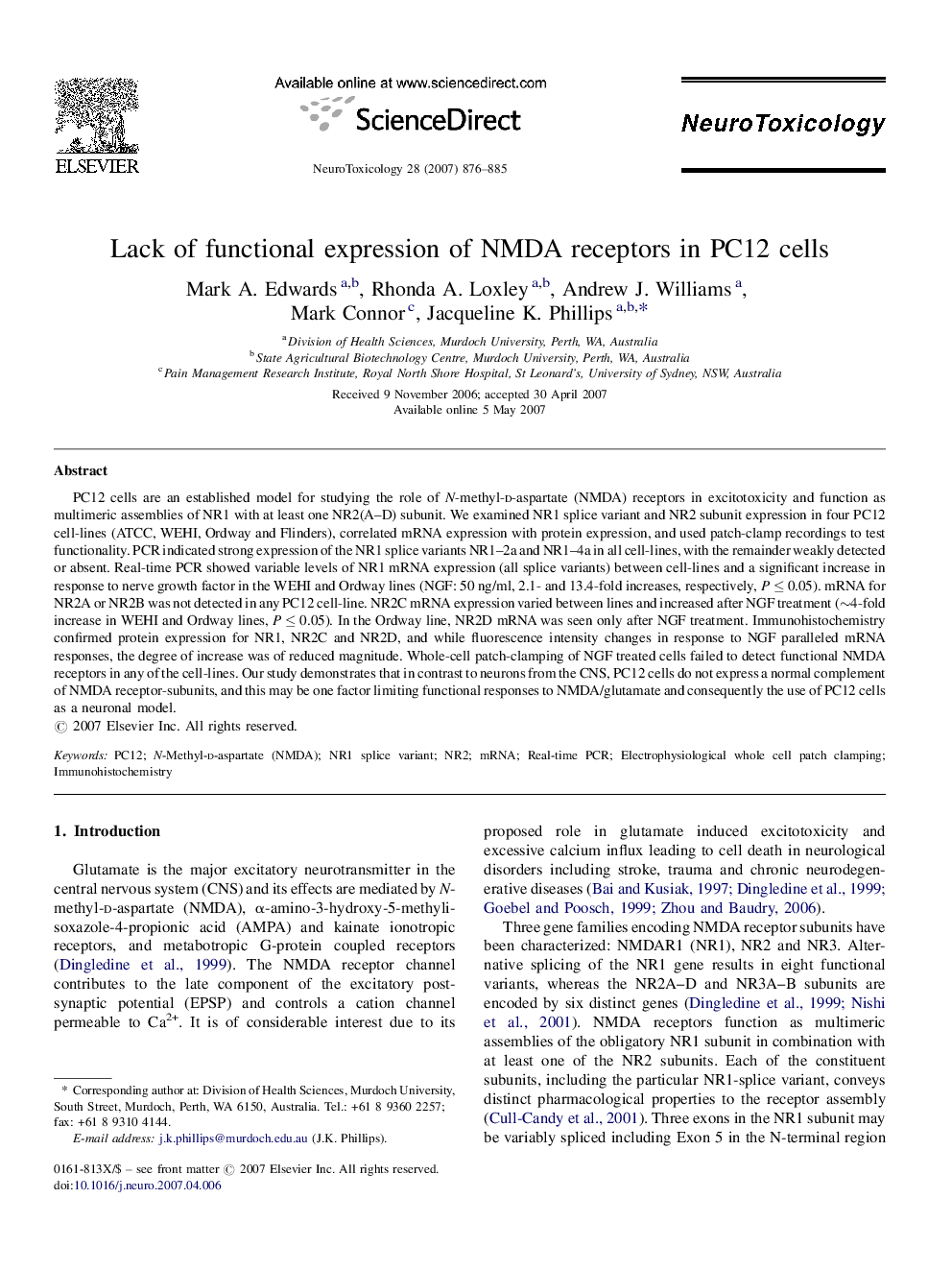| Article ID | Journal | Published Year | Pages | File Type |
|---|---|---|---|---|
| 2590482 | NeuroToxicology | 2007 | 10 Pages |
PC12 cells are an established model for studying the role of N-methyl-d-aspartate (NMDA) receptors in excitotoxicity and function as multimeric assemblies of NR1 with at least one NR2(A–D) subunit. We examined NR1 splice variant and NR2 subunit expression in four PC12 cell-lines (ATCC, WEHI, Ordway and Flinders), correlated mRNA expression with protein expression, and used patch-clamp recordings to test functionality. PCR indicated strong expression of the NR1 splice variants NR1–2a and NR1–4a in all cell-lines, with the remainder weakly detected or absent. Real-time PCR showed variable levels of NR1 mRNA expression (all splice variants) between cell-lines and a significant increase in response to nerve growth factor in the WEHI and Ordway lines (NGF: 50 ng/ml, 2.1- and 13.4-fold increases, respectively, P ≤ 0.05). mRNA for NR2A or NR2B was not detected in any PC12 cell-line. NR2C mRNA expression varied between lines and increased after NGF treatment (∼4-fold increase in WEHI and Ordway lines, P ≤ 0.05). In the Ordway line, NR2D mRNA was seen only after NGF treatment. Immunohistochemistry confirmed protein expression for NR1, NR2C and NR2D, and while fluorescence intensity changes in response to NGF paralleled mRNA responses, the degree of increase was of reduced magnitude. Whole-cell patch-clamping of NGF treated cells failed to detect functional NMDA receptors in any of the cell-lines. Our study demonstrates that in contrast to neurons from the CNS, PC12 cells do not express a normal complement of NMDA receptor-subunits, and this may be one factor limiting functional responses to NMDA/glutamate and consequently the use of PC12 cells as a neuronal model.
